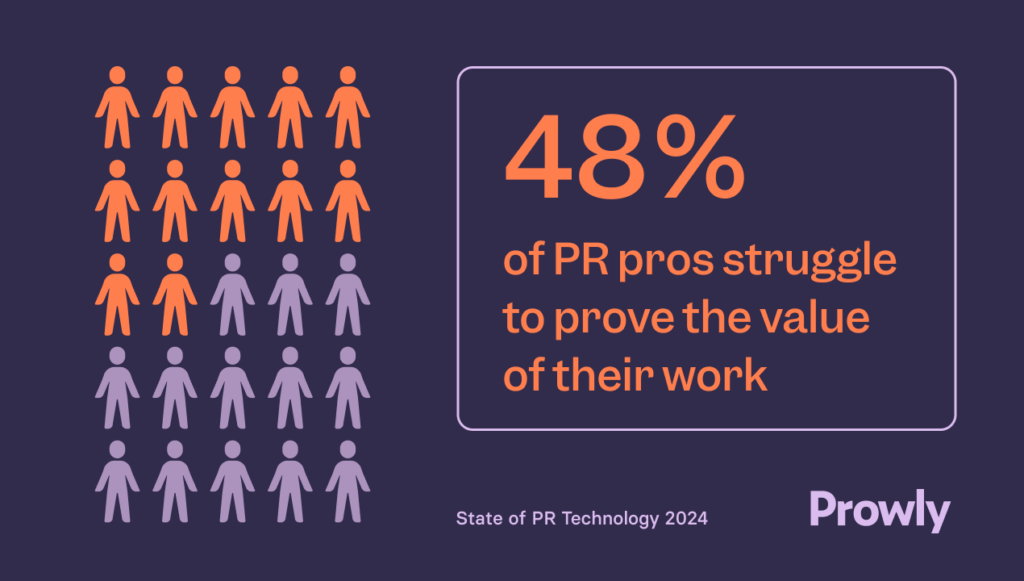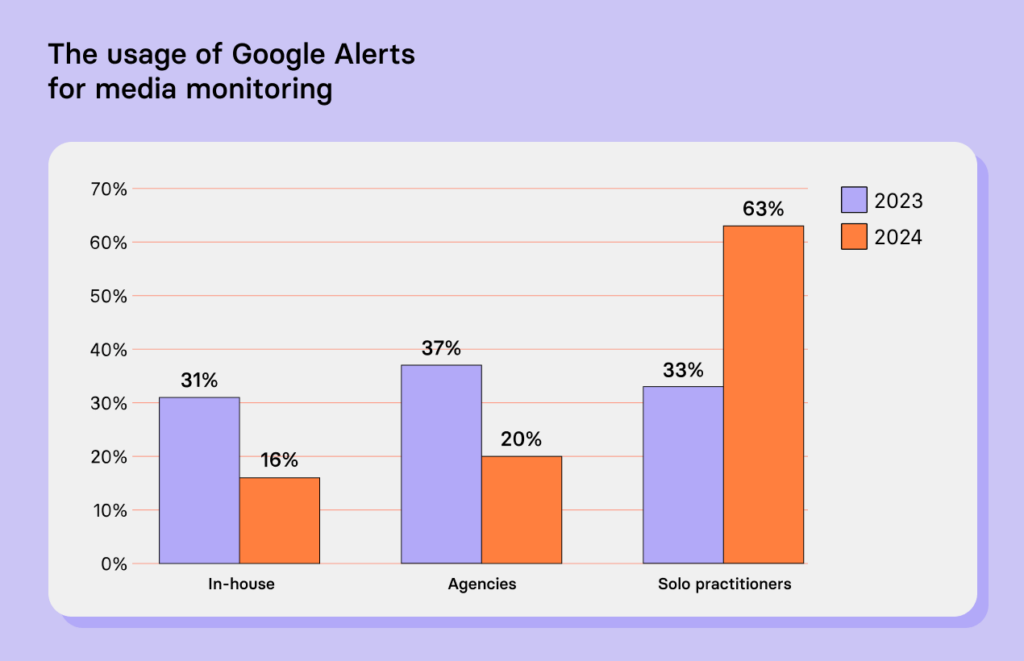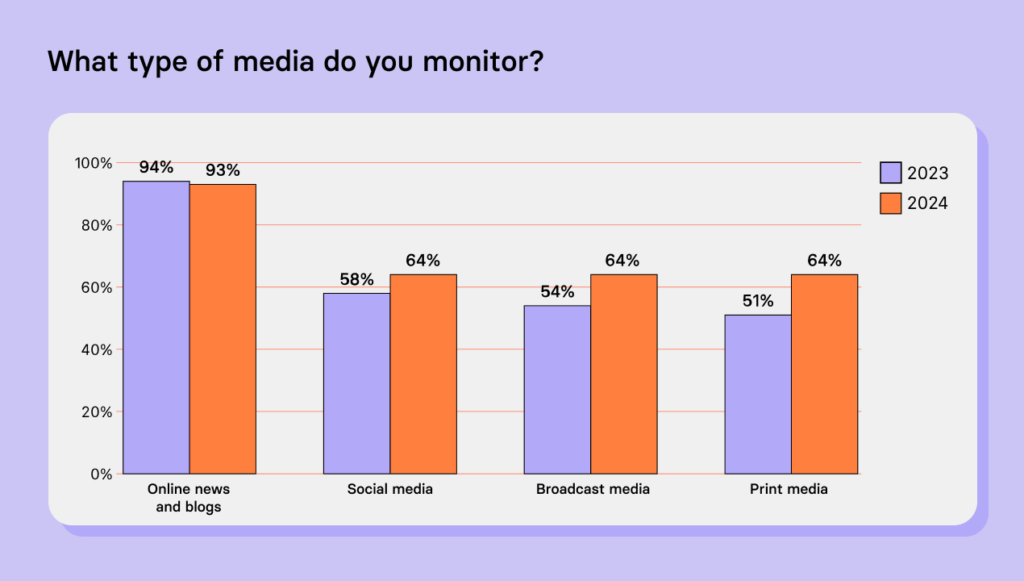
You’d think that year on year changes in any industry aren’t significant enough to flip the script upside down, yet every single time we’re collecting answers from PR professionals we get to find out the shifts they’re dealing with on a daily basis.
We found that an increasing number of clients and stakeholders are starting to prioritize evaluating our work on measurable results, usually built on data-driven strategies.
With smaller budgets and cuts all around, 58% of respondents said they’re struggling with finances, so the only way to get more money is to deliver a clear ROI.
What’s the solution? Respondents in our survey say it’s time to prioritize resources according to what we want to achieve, contact people who can get us results, and choose the right channels with extreme care (more on that in the report!).
#1 The rise of the ROI-driven PR model
PR professionals are facing increasing pressure to demonstrate value, with 48% struggling to prove the effectiveness of their work in 2024—up from 41% in 2022.
More than ever before, the PR industry is under more pressure to align their activities with business outcomes. Since the demand from clients and stakeholders for proving value is coming at us from all sides, choosing ways of working that don’t yield concrete numbers is putting us at a disadvantage. While personalization and fostering strong relationships with our contacts isn’t going away, it might need to step off center stage, at least for a bit.

- Our respondents said that the use of sales metrics in PR measurement has increased from 13% in 2023 to 19% in 2024.
It’s not easy for clients and stakeholders to comprehend the value of the work we do with traditional metrics like the number of mentions or SoV, therefore people have shifted towards more bottom-line KPIs such as the number of leads or specific sales metrics.
- People want faster, more comprehensive PR reports. In 2022, only 6% of respondents said this was important, but by 2024, that number has risen to 22%.
This only highlights the PR industry’s need to prioritize efficiency, clarity, and real-time decision-making. After all, reporting is an essential tool in proving our worth, what we do, and how we succeeded.
#2 Data-driven decisions require PR tools
Budget constraints aren’t stopping the rise of PR technology adoption. Tool usage is up to 67.4% in 2024, despite 68% of professionals citing financial challenges.
Excel spreadsheets are still widely used, but they’re not enough. Those in charge want to have the ability to see what coverage you’ve secured, what impact it had on the overall strategy, and how it improved their goals. Since juggling between several tools is not only tiring, but also expensive, PR professionals are steadily moving towards implementing PR tools into their workflow.

- The use of regular email services for pitches has significantly declined, dropping from 74% in 2022 to 50% in 2024.
Sending emails through Gmail or Outlook is fine if you continuously pitch to the same contacts over and over again. Since there is an abundance of content-producing outlets at the moment, such an option isn’t as feasible as it was even two years ago.
Now, PR professionals want specialized features such as open rates, click rates, and read rates so they can further personalize their outreach and make sure their pitching strategy is polished to perfection.
- Google Alerts usage has decreased from 31% in 2023 to 21% in 2024, which indicates an increase in spending on paid media monitoring tools.
While Google Alerts can give you basic information and notifications for mentions, it lacks the depth, accuracy, and analytical capabilities of tools that are specifically designed for public relations.
Paid tools can deliver more insights such as sentiment, SoV, competitive benchmarking, audience insights and many others. In order to make data-driven decisions, such tools are becoming an indispensable tool to prove ROI and demonstrate their work aligns with business goals.
- AI usage in PR has increased significantly, with adoption for research rising from 53% to 67% and for analysis from 8% to 31%.
One thing is for sure: technology is great at computing and making sense of numbers. Whether it comes down to quantifying research, or analyzing loads of complex data, AI can do it faster, and perhaps better, than any human can.
Its ability to process data and give insights based on those numbers allows PR professionals to measure outcomes more effectively and precisely, so that they can save time on making data-driven decisions.
#3 The growing emphasis on measurement
An increasing number of PRs are prioritizing tracking and measuring PR efforts, with a focus on achieving quantifiable results, rising from 23% in 2022 to 39% in 2024.
There’s less of a desire among the PR industry to complete tasks that don’t yield quantifiable results. After all, in order to stay competitive and show off your success you’ve got to give your client and stakeholders an outcome, not an output. We’re always busy, but is it doing us any good? This year, concrete numbers are what kept us ahead of the game.

- PR measurement is on the rise, with 75% of professionals now tracking their efforts, up from 69% in 2023.
As with any business, proving value is more than just a necessity. Whether you’re a one-man band doing it all, work in-house, or have an agency to run, effectively demonstrating success can set your work apart from the other employees or business competitors.
- There has been a significant uptick in monitoring social media, broadcast media, and print media.
With loads of content all around us, monitoring all types of channels is crucial to knowing the perception of your brand efforts and whether they’re working at all. More content to analyze means more opportunities to show where numbers are doing great, and where they can be improved.
Some food for thought
Are we permanently shifting to a data-driven model in PR, forever? It’s impossible to predict so, even though there’s been a growing trend of dipping your fingers more in concrete PR measurement as opposed to anything else.
With increasingly tight budgets, showing value is now more important than ever. Thankfully, dedicated PR tools help with tackling this challenge head-on thanks to relevant metrics, measurement capabilities tailored to different business model needs and more. With that being said, it’s apparent that data-driven, ROI-focused PR strategies are here to stay.

